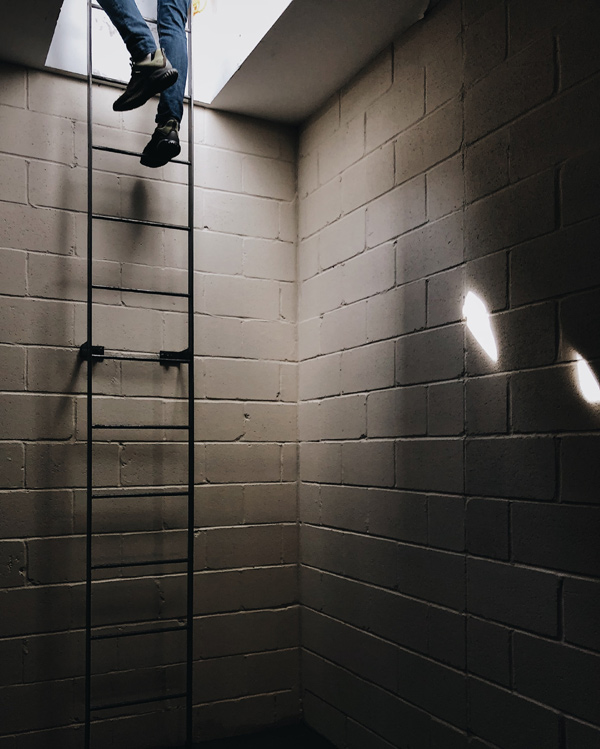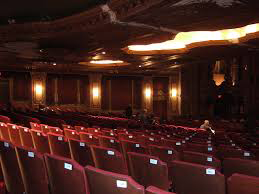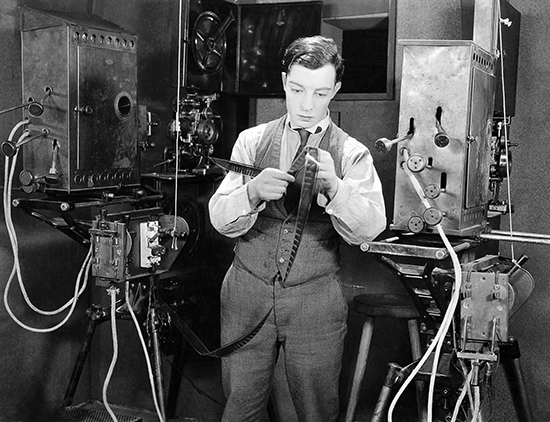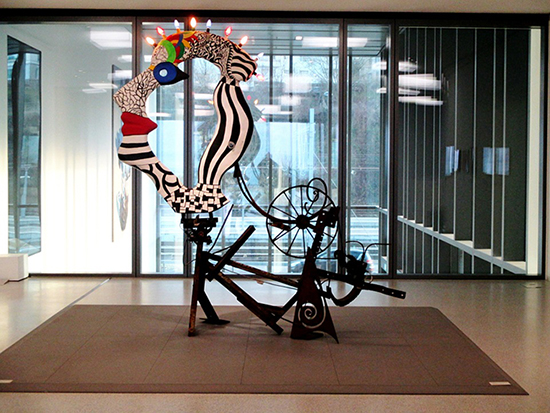Thought Leadership Studio Blog Posts:
4 Thought Experiments to Enhance Creativity
Thought Experiments can be instruments of creativity, the Inspiration essential to Strategic Thought Leadership. Here are 4 such types of Thought Experiments.

#creativity, #innovation, #mentaltraining, #neurolinguisticprogramming, #nlp, #thoughtexperiments, #thoughtleadership, #workshop
Where would we be without letting our imagination wander?
So what if the teacher's matter-of-fact voice spiced with screeches of chalk scraping on the board, outlining lists of things to remember on the dimly lit green square - even with a side-helping of the thump of books on his desk to get his attention - wasn't enough to snap young Einstein out of his daydreams? Those daydreams would include considering the shafts of sunlight he saw when riding his bicycle in Munich. They would trigger the question- "What it would be like to ride on a light beam?".
And Special Relativity was born ... from a daydream...from a thought experiment.
 Do you sometimes feel like you are pushing against a wall and would rather find the door?
Do you sometimes feel like you are pushing against a wall and would rather find the door?
Would you like a fresh perspective on a situation?
Thought experiments can be used for breakthroughs and innovation in any area of life. The right thought experiment is an exquisite tool for generating new possibilities, and their relevance here is that such new possibilities are a prerequisite for Strategic Thought Leadership. If you are to lead thought, then it needs to be to somewhere new. To be Captain Obvious, people don't need to be led to where they already are.
This post aims to be the kindling on the fire of inspired design of such mental journeys for your audience. Consider these four types of thought experiments like 4 types of kindling, each with its unique fire stimulating qualities. One might trigger a faster burst of inspirational flame, another might be more "slow burn" but keep the fire going longer, another might start smoldering where you can't initially see it until a golden flame dances out from behind the woodpile. They all provide light and warmth, though.
The Stanford Encyclopedia says, "The primary philosophical challenge of thought experiments is simple: How can we learn about reality ... just by thinking?" These thought experiments are intended to expand one's reality by accessing hidden human reserves, untapped possibilities outside the boundaries of what we normally think we can do. Breaking the chains of mental habits can cast light on resources hidden in the shadows and spur one to see the previously unknown or accomplish at higher levels.
"Change your thoughts and you change your world." Normal Vincent Peale
There is much outside of our perception. Peale's quote acknowledges that we don't respond to the world, but to our mental models of the world. If you ask 5 people who left a room together to describe their recollection, you'd get 5 different descriptions. Bees see ultraviolet shades invisible to humans to better find nectar. When my dog sniffs a tree, I remember dogs have a sense of smell up to 100,000 times more sensitive than humans. People hear sound waves from 20 to 20,000 hertz yet dolphins and bats can hear up to 100,000 hertz. Instruments can measure frequencies yet further beyond our sensory perception. And that is far from all that is.
We are like vintage radio receivers tuned in only to very narrow bands of frequencies. But, those other "frequencies" are there, so maybe it's just a matter of getting a better antenna to pick up some new programming. Those other frequencies our dial isn't on contain positive breakthroughs that could enrich the lives of our audiences and ourselves.
 Thought experiments are ladders over the mental walls of our thinking habits. Once you have climbed up, firmly grasping the cold metal rail, and are peeking over those walls, you may also hear the whispers of a new story or catch a whiff of a pleasant-smelling, yet unfamiliar meal cooking. How would it make things different if you more regularly generated breakthrough ideas and inspiring new insights?
Thought experiments are ladders over the mental walls of our thinking habits. Once you have climbed up, firmly grasping the cold metal rail, and are peeking over those walls, you may also hear the whispers of a new story or catch a whiff of a pleasant-smelling, yet unfamiliar meal cooking. How would it make things different if you more regularly generated breakthrough ideas and inspiring new insights?
Two tips before you start:
- Sometimes a thought experiment can bring instant insight and other times there is an incubation period before an answer, idea or breakthrough seemingly comes "out of the blue". Can you be surprised at what you are doing later when an inspiring innovation comes to you?
- You might consider approaching these in the spirit of a mental break from routine for an inner adventure ... one in which you suspend your usual patterns of thinking and enter a trance-like, dreamy state. Enjoy taking the time out.
Enough talk, let's get to the thought experiments!
Since this is a long post, here's some shortcuts for quick navigation to each one:
- The Model of Excellence
- The Time Machine
- The Abstract Sculpture
- The Computer Simulation
1. The Model of Excellence
The Model of Excellence Thought Experiment Unlocks Possibilities by Removing Limits of Identity
- Who represents excellence in handling issues like you are dealing with?
- Is it a famous author, consultant, or businessperson? Or is it a historical genius like Tesla or Einstein?
- A fictional person or mythical figure, even?
- What would be different if this person (or mythic being) took your place in dealing with your challenges and opportunities?
- How might things turn out differently?
One powerful thought experiment to enhance creative thinking is the "Model of Excellence" exercise.
NLP was built on modeling excellence. Co-creators Richard Bandler and John Grinder built a syntax to decode what high level achievers did so their magic could more readily be transferred to others.
Geniuses are born, as we all are. But since they weren't composing symphonies or discovering electricity from the maternity ward, they are also made. And modeling them is a way to accelerate learning what they likely paid a harder price for.
Aspects worth modeling can include physiology, attitude, beliefs, and sensory experience. It works in part because it is often easier for a beginning entrepreneur to see Steve Jobs coming up with an innovation that reinvents his field than to see himself or herself doing it. Making such an inner movie vivid, dramatic, and bigger-than-life can amp things up yet another level.
The first step is to choose a model.
Who, to you, represents excellence in handling the issues you are dealing with? Is it a famous author, marketing consultant, or businessperson? Is it a historical genius like Tesla or Einstein? A mythological figure like Apollo or Thor? How would it look and sound if this person took your place for a while in dealing with your challenges?
Now let's make a movie.
 Imagine you are at the theater. There's the usual squeaking of chairs, hushed lighting, and smell of popcorn. You are watching a film about your model of excellence taking your place and facing your challenges. How would things turn out differently? Fully immerse in watching your model of excellence create results in your situation. Maybe Nikola Tesla invents something or the previously mentioned Steve Jobs instigates a breakthrough that reinvents an industry. Let it play out all the way.
Imagine you are at the theater. There's the usual squeaking of chairs, hushed lighting, and smell of popcorn. You are watching a film about your model of excellence taking your place and facing your challenges. How would things turn out differently? Fully immerse in watching your model of excellence create results in your situation. Maybe Nikola Tesla invents something or the previously mentioned Steve Jobs instigates a breakthrough that reinvents an industry. Let it play out all the way.
Now, rewind the movie to the beginning and watch it again, only this time, superimpose an image of yourself over the model of excellence, seeing both at the same time until the "other you" matches the actions, the way of looking at the world differently, and the energy and drive of the model.
Play the movie all the way to the end, replacing the model of excellence with the "other you" until you clearly see yourself acting, thinking, and feeling the same way. Feel free to add a soundtrack of motivating music. Would you prefer John Williams or Hans Zimmer for composing the soundtrack? Or would an innovative Indie band fit the scenery?

As the producer of this inner movie, you can enhance the drama of the achievement with perspective tricks or special effects. For example, add fireworks sparkling high above, celebrating the achievements, or a crowd roaring in a large stadium. Take time to make it vivid and bigger than life.
Now, use your remote control to restart the movie from the beginning, step into it fully and see, hear, and feel the events from the perspective of the "other you" that has modeled your ideal of excellence. Now it is fully 3D, an immersive virtual reality experience with unbounded scenery in all directions. Again, play it all the way to the end.
What new actions and thoughts emerge? What different feelings do you notice when playing this enhanced character?
Feel free to step back out, go into the production room and make any adjustments you need to feel totally aligned in the experience ahead of stepping back into it as a 3D immersive VR movie, seeing from your own eyes, hearing from your own ears, feeling yourself fully in it.
How would things be different if you consistently applied this going forward? How would your results change? Your relationships? Your mindset?
Remember when an image displayed too long on an old computer monitor would get "burned in" Practicing such mental movies regularly can similarly imprint them deeply. What skills and achievements of models of excellence would be helpful to "burn in" the theater of your mind?
Like any of these thought experiments, try the Model of Excellence on for size and, if it works for you, keep doing it. Or you can try another. For HG Wells fans, we have :: vintage drumroll:: ... "The Time Machine".
Back to top
Back to list
2. The Time Machine
What if time travel was real? Quantum mechanics hints at the possibility.
- How would it change your perspective if you could time travel years into the past and surprise the younger you with accomplishments or skills you've gained since that would have seemed unimaginable then?
- What extra resource might you give your younger self to help achieve more in the coming years?
- What might you similarly learn from your future self if your "future you" visited you from 10 or 20 years into the future?
- What would you be especially delighted and surprised to find out you learned or accomplished?
Accessing our creativity is intrinsically enjoyable in itself. Keep that in mind because it helps to approach these thought experiments in the spirit of light-hearted fun.
And what could be more fun and child-like than having a time machine?
The Time Machine Thought Experiment is also featured as the center point of a podcast episode.
Click here to listen.
Let's warm up the imagination muscles a little first. Have you seen the time travel comedy skit featuring identical twins?
What if time travel was a real thing in an alternate universe? After all, quantum mechanics says it is possible.
Here is a way to play with that concept to generate possibilities:
First, think of some ability or accomplishment you have now that 5 or 10 years ago, you wouldn't have even imagined.
In your imagination, travel back in time and share that information with the "past you". How does the "past you" react? Maybe deer-in-the-headlights? How would the reply sound as you shared this? How would he or she feel learning about future self's abilities or accomplishments?
Now, keeping this in mind, return fully to the present. Shake it off.
Imagine you are getting in your time machine again, but this time traveling to the future, looking back on your present self, seeing and hearing your present self similarly to how you experienced your past self.
As your future self, imagine traveling back in time to the present telling your present self about something you now do or have in this future time that your present self responds to in the same way.
What would that be? What feeling does it give you, even as it slowly emerges? Where is the feeling? How does it change your perspective to amplify that feeling? Spend some time letting your mind - not your conscious mind, the other mind - play with the possibilities.
Back to top
Back to list
3. The Abstract Sculpture
Using abstract visual thinking to stimulate unconscious creative processes.
- If you could see your current marketing, leadership or influence results as an abstract art sculpture, what would it look like?
- How would it look different if it represented the ultimate result you are aiming for with your Strategic Thought Leadership - a higher level of achievement, and in audience terms - instead?
- Spend some time contemplating this revised abstract sculpture in detail.
- What new perspective or inner dialogue emerges when you return to thinking about the issue?
- This can work with different sensory systems as well - try it with a piece of instrumental music or even a gourmet meal.
"Eureka!" –Archimedes
"Abstraction forces you to reach the highest level of the basics." – Alan Soffer
"I am searching for abstract ways of expressing reality, abstract forms that will enlighten my own mystery." – Eric Cantona
This enhances creativity by creating a space of uncertainty pregnant with positive potential, a space we entrepreneurs are generally familiar with. In this case, though, it's in the spirit of fun and for training the creative powers of the deep mind. ... this kind of interplay between the conscious and unconscious mind helps to "tease out" ideas from seemingly know where you get your best ideas from? The ones that become the pivot points to getting to the next level?
 Before you start, set clear intent. A key to success with this (or any) thought experiment is creating the state of having achieved what you want in advance. That state can be elicited with questions like "What will it feel like, look like, sound like to have this?" and "What would you accomplish if anything was possible and you could not fail?"
Before you start, set clear intent. A key to success with this (or any) thought experiment is creating the state of having achieved what you want in advance. That state can be elicited with questions like "What will it feel like, look like, sound like to have this?" and "What would you accomplish if anything was possible and you could not fail?"
And, because we are dealing with a larger system in Strategic Thought Leadership, we want to incorporate Systems Thinking by setting our goals not just for our personal outcomes but for the positive impact on the larger systems that enable the personal outcomes we want. That way our goals are ecological.
It's like when a salesperson focuses his vision on prospects' lives enriched by the product, he or she sells more and makes more commission than when just visualizing the resulting commission checks. And isn't the joy of making a positive difference for others the most worthwhile motivation?
So ... keeping this in mind ...
Before you see and hear this as if you have already achieved it ... before you notice how you feel different.... Before you answer the questions, "How does this feeling move, change, or grow within you?" and "What does it change when you spin that feeling and keep it spinning?"...
Set aside some time when you can give this all your attention. Turn your smart phone off and let that act be an anchor for letting concerns slip away ... a good regular practice to have regardless.
Think of the times when you were in a relaxed, dreamlike state.
How were things different in those times? How did things look different?
How was your internal dialogue different?
What feelings did you notice that let you know you were relaxing and letting your imagination wander?
How was your breathing changed?
To go deeper, you can cycle through the senses like this a few times. What you saw, heard, felt ...
Now, if you could see your current level of achievement in that area as an abstract sculpture, what would it look like? What colors, forms, shadows and lighting would best evoke the feeling of it? Let enough time pass for this representation to fully form.
You can consciously sculpt it or just let shapes emerge, or both.
Look at it from different perspectives. Step back and see it from a distance. Imagine walking around it, looking at it from different angles. How would it look from above? Below? What details would you notice if you zoomed in close to it?
As this congeals in your mind's eye, imagine how the sculpture would look different if, instead, it represented the higher level of achievement, joy, focus, or whatever you value most about the accomplishment you want. Again, keep it abstract so that it evokes the feeling without being a clear representation. Spend some time contemplating this changed art piece. Again, you can zoom in close, then zoom out to see it from a distance as well as see it from various angles.
Feel free to also adjust the setting. Maybe at MOMA in Chicago or NYC? You can adjust the lighting and viewing platform for maximum artistic effect as well.
What is the difference between how you felt viewing the abstract sculture (or hearing the music or tasting the meal) representing the existing situation and the feelings when viewing (or hearing or tasting) the sculpture (music piece or meal) representing success in your Strategic Thought Leadership? Here's a chart you can use to tally off the differences...
| Factor | Feeling about "Current" Abstract | Feeling about "Future" Abstract | Same or different? |
|---|
| Location | | | |
Direction | | | | Size | | | | Temperature | | | | Weight | | | | Circulates? | | | |
Now, after listing the differences (the stuff that is the same doesn't matter) ... amplify those differences as you do the exercise.
Ideally spend at least 15 minutes contemplating the abstract sculpture in both original and evolved forms.
When you are ready, come back and reorient yourself to your normal day-today concerns, maybe with a look at your calendar or planner.
“Abstraction generally involves implication, suggestion and mystery, rather than obvious description.” – Robert Genn
The thought experiment is like bait on a fishing line in murky, unfamiliar waters teeming with life. You can't see what's down there but you will discover it when you reel it in. As the chef of innovation, you don't know what dinner will be but it will be good!
How would things be different with enhanced mental agility from regular thought experiments?
Back to top
Back to list
4. The Computer Simulation
What if you found you were living in a big video game and nothing you experience is real in the manner you thought it was? What if you had control over the game?
- Elon Musk has said we could be living in a computer simulation.
- What if this was actually the case and we are living in a big video game so that nothing you experience is "real" in the sense you thought it was?
- What would you change if you were the programmer of this virtual reality that you previously mistook as real life?
- How would that make things different?
- What is the airspeed velocity of an unladen swallow?
Elon Musk referenced the concept in an interview where he said we could be living in a computer simulation.
Absurd? Maybe... but it makes for an interesting "what if" thought experiment in shifting perception.
Now, if you are intrigued by the concept, let's set up a framework to continue playing with the concept of the Computer Simulation Thought Experiment:
Can you imagine how things would be different if Musk is right and we are in a simulation?
How would the awareness of living in such a simulation affect your perspective on things you may have previously considered obstacles?
Now, to take things up a level, imagine that you discover you are actually the programmer of the reality game projecting your consciousness into the game to become the character you thought you were. As the programmer, you can leave the virtual reality and change the game in any way you like before reentering it.
Knowing this, how would you change it?
After doing so, how would things be different when you re-entered the identity of the game character you thought you were?
Let yourself slip into a daydream state (NOT while driving or operating heavy machinery!) and spend enough time with these questions for interesting new thoughts to emerge...
*************
Back to top
Back to list
If these thoughts experiments don't come easily at first, consider that most people aren't used to thinking in such out of the box ways. If it was habitual for everyone, then everybody would be bursting forth with great ideas and innovating regularly... and, well, they aren't.
In fact, something that holds potential progress back is humanity's tendency to build barriers around changing deeply entrenched belief systems about how things are and how things work. So it takes more than just innovative thinking to create real change, of course. The Inspiration should be accompanied by Insight - Where are the things and ideas that could change and that it would help to change? - and Impact - How to use media for Strategic Thought Leadership to really change mental models in an audience for their benefit and to move the game for all of us forward?
When you are in a rut, putting a different frame around the situation can bring the fresh perspectives, new soundtrack, and different feelings that facilitate the breakthroughs that take things to new levels.
If your initial tries at these admittedly unusual ways of thinking don't immediately bear fruit, consider it like beginning a physical exercise program. The tentative first steps wake up a previously sedentary body to more activity and focusing on enough frequency and regular progress steps will reap great benefits.
But don't be surprised at your surprise at an unexpected insight making all the difference in
Enjoy.
***************************************